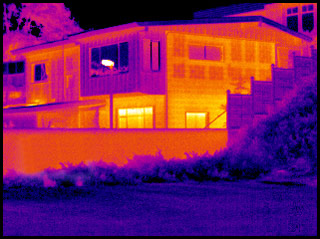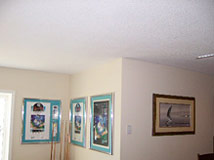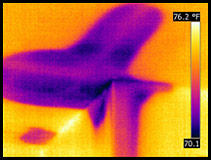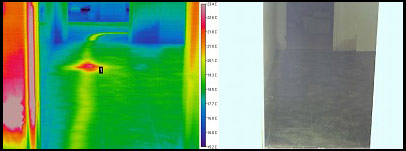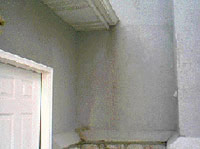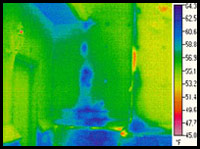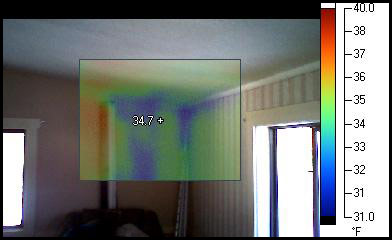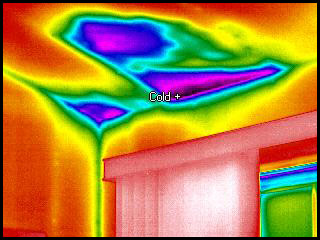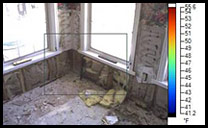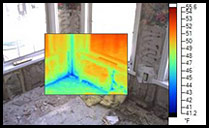
APPLICATIONS The use of infra-red technology can be employed in a variety of applications across a wide range of different industries.
|
The most efficient procedure for determining the thermal performance of a building envelope is with infrared thermography. It can be used to identify heating and cooling loss due to poor construction, missing or inadequate insulation and moisture intrusion. Correcting the defects plays a significant role in increasing building efficiency and structural integrity. Thermography can identify surface temperature variations of the building envelope, which relates to problems in the structure, thermal bridging, moisture content and air leakage. Two primary mechanisms for heat loss in buildings are conduction through the walls and air leakage. Both can be identified from the surface of the building with infrared thermography. Early correction of the faults identified can be made before extensive damage occurs.
|
![]()
INFRARED CERTIFIED
Level II Certified Thermographer
CEM® Certified Energy Manager

AHIT CERTIFIED
Master Building Inspector
